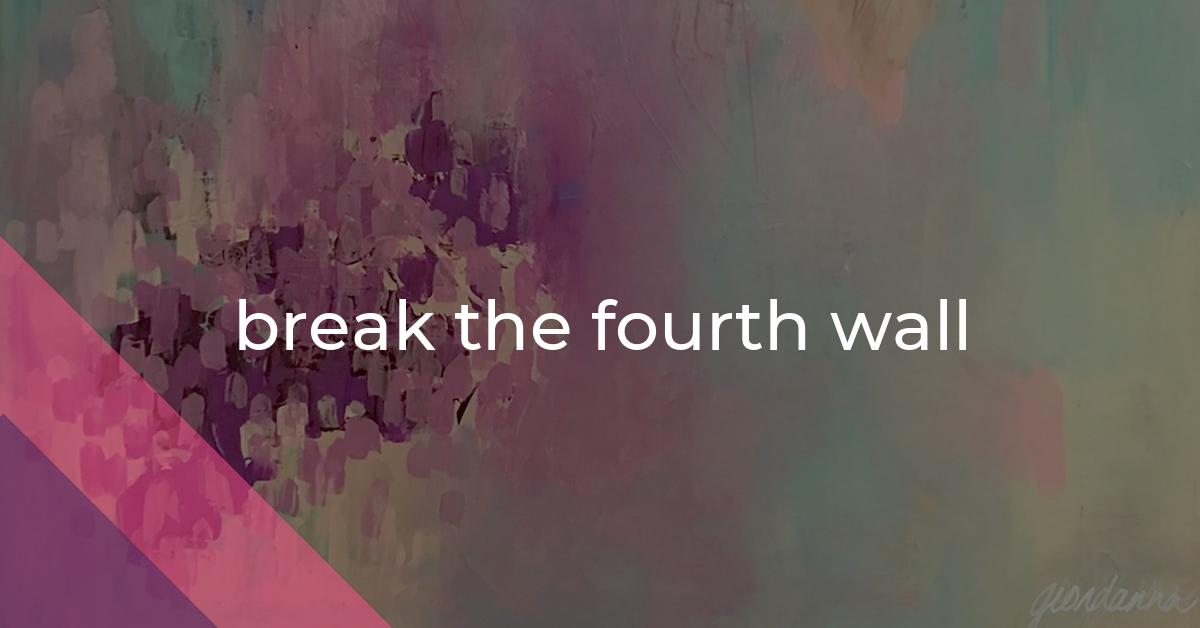break the fourth wall: Idiom Meaning and Origin
What does ‘break the fourth wall’ mean?
The idiom "break the fourth wall" means when a character in a film, play, or TV show acknowledges the presence of the audience by speaking directly to them or by becoming aware of being part of a work of fiction.

Idiom Explorer
The idiom "fourth wall" refers to the imaginary wall that separates the audience from the actors on stage or the characters in a work of fiction. Breaking the fourth wall occurs when a character addresses or acknowledges the audience, blurring the distinction between reality and fiction.
The idiom "burst someone's bubble" means to spoil someone's illusion or destroy their false belief.
The idiom "brick in" means to close or seal off an area or entrance, often as a way of preventing access or escape. It can also refer to isolating oneself from others or shutting down emotionally.
The idiom "break up" means to end a relationship, usually a romantic one, or to dissolve a group or organization.
The idiom "break the story" means to be the first to uncover or report on important news or information.
The idiom "break the seal" means to be the first person to use a particular facility, usually a restroom, in a group of people. It is believed that breaking the seal will lead to more frequent trips to the restroom.
The idiom "break the Sabbath" means to violate or ignore religious rules or traditions related to observing the day of rest and worship, typically referring to the Christian Sabbath on Sundays.
The idiom "break the ice" means to break down initial social awkwardness or tension in order to create a more comfortable and relaxed atmosphere.
Unveiling Dramatic Illusions
The idiom "break the fourth wall" is a widely recognized term used to describe the act of a character or performer in a play, movie, or television show acknowledging the audience directly. This idiom has its origins in theater and has since been adopted in other forms of media. It is often used to create a sense of connection and engagement with the audience and can be seen as a technique to enhance comedic or dramatic effect.
One of the earliest known uses of this idiom can be traced back to the 18th century, in a French comedy called "Le Prejuge à la Mode" by Charles Palissot. In this play, one of the characters turns to the audience and speaks directly to them, breaking the illusion that they are witnessing a fictional world. This concept was further developed and popularized by playwrights like William Shakespeare, who frequently employed asides and soliloquies to address the audience directly.
The term "fourth wall" refers to the imaginary barrier that separates the world of the performance from the audience. It represents the front of the stage, with the other three walls being the sides and the back. When a character "breaks the fourth wall," they figuratively step through this barrier, addressing the audience and acknowledging their presence. This act can range from a simple glance or gesture to full conversations, where the character speaks directly to the audience as if they were a part of the story.
Breaking the fourth wall serves various purposes in storytelling. It can be used to provide audience insights into a character's thoughts, motivations, or emotions, creating a sense of intimacy and connection. This technique can also be employed for comedic effect, allowing characters to share jokes, sarcastic remarks, or witty observations directly with the audience. By inviting the audience into the narrative, the idiom creates a meta-awareness that blurs the line between reality and fiction.
Throughout the decades, breaking the fourth wall has become a prevalent narrative device in movies and television shows. It is often used to subvert conventions and challenge the traditional storytelling format. The idiom has even transcended the realm of traditional media into other art forms, such as novels, graphic novels, and video games. Its flexibility and adaptability have allowed it to remain a relevant and widely understood concept that continues to be utilized by creators in different contexts.
The idiom "break the fourth wall" originated in theater and has been adopted by other forms of media. It refers to the act of a character acknowledging the audience directly, thereby breaking the illusion of the fourth wall separating the performance from the viewers. This idiom serves multiple purposes, including creating a connection with the audience, providing insights into characters, and adding comedic or dramatic effect. It has evolved over time and continues to be a powerful tool in storytelling, blurring the line between fiction and reality.
Example usage
Examples of how the idiom "break the fourth wall" can be used in a sentence:
- 1. The movie Deadpool is known for its humorous moments when the main character breaks the fourth wall and directly addresses the audience.
- 2. In the television show "House of Cards," the character Frank Underwood frequently breaks the fourth wall by speaking directly to the camera, revealing his thoughts and intentions to the viewers.
- 3. During the play, one of the actors momentarily broke the fourth wall by stepping off the stage and interacting with an audience member, creating a surprising and immersive experience.
More "Theatre" idioms



